Papers by Dr. Kiplagat Chelelgo, Ph.D., MCIArb
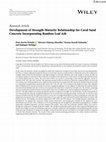
Advances in Materials Science and Engineering, 2024
In this study, the maturity concept was applied to predict the compressive strength of coral sand... more In this study, the maturity concept was applied to predict the compressive strength of coral sand concrete incorporating bamboo leaf ash as a cement replacement material. The use of coral sand concrete is restricted due to drawbacks such as low compressive strength, which results from the brittleness and high breakage of coral sand. Therefore, this study sought to evaluate the effect of varying percentages of coral sand on the compressive strength of conventional river sand concrete incorporating bamboo leaf ash as a partial replacement for cement. The coral sand content was varied as a percentage of the total fine aggregate content in
amounts of 0%, 10%, 20%, 30%, and 40%. The maximum amount of 40% was chosen to confine the combined fineness of coral and river sand in zone 2 of the gradation curve, which was the zone for the river sand used in the control mix. Bamboo leaf ash was used as a cementitious supplementary material and varied at 0%, 2.5%, 5%, and 7.5% according to the weight of cement. The combined effect of bamboo leaves ash and coral sand on concrete strength development was investigated. To determine the optimal content of coral sand and bamboo leaf ash, 25 mixes were prepared and subjected to compressive strength tests. The mixture containing only river sand and no bamboo leaf ash was the control. Three sets of samples were cured in temperature baths kept at 4°C, 17.5°C, and 40°C. The bath samples were drawn periodically and their compressive strength was tested during a 28-day curing period. It was observed that the early age strength development rate increased with increasing percentage of coral sand. An increase in the amount of bamboo leaf ash was observed to lead to a lower rate of strength development for mixes containing no coral sand. The optimal mix was found to have 40% partial replacement of river sand with coral sand and 5% partial replacement of cement with bamboo leaf ash. The findings were further supported by XRD, SEM, and EDS analyses. The strength-maturity relationship was
developed for the optimal mix. Activation energy, datum temperature, and strength gain constant for the optimal mix were determined as per ASTM C 1074. Calibration curves for predicting concrete strengths were developed using logarithmic, modified
exponential, modified hyperbolic, and dose-response Hill models. Nurse–Saul and Arrhenius maturity indices were used to develop the compressive strength prediction models. The modified exponential model and the dose-response Hill model were
found to have higher accuracy in estimating compressive strengths compared to the logarithmic and modified hyperbolic models which gave poor prediction of compressive strength. Arrhenius maturity function was effective in strength estimation compared to Nurse–Saul maturity function. The results of this study showed promising performance for certain mixtures and hence suggesting potential application in construction projects.
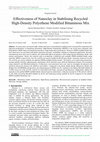
Seventh Sense Research Group , 2024
In recent years, increased traffic volume and severe environmental conditions have increased the ... more In recent years, increased traffic volume and severe environmental conditions have increased the requirement for improved performance in bituminous pavements. High-Density Polyethylene (HDPE) is one of the most commonly used Polyethylene. HDPE improves bituminous pavement's high-temperature performance. However, HDPE-modified binder has been observed to be associated with phase separation and poor workability, limiting its widespread application. Recently, nanomaterials have been used to balance the undesirable effects of polymers while enhancing the bituminous binder and mixture performance. Hence, the research aims at producing a stabilised and workable HDPE-modified binder using nanoclay. HDPE content of 2%, 4%, 6%, and 8% was used to modify the 80/100 base binder. Nanoclay content of 1%,2%, 3%, and 4% was used to stabilise the optimum HDPE-modified bitumen binder. The binders were tested using penetration, storage stability, ductility, softening point, and dynamic shear rheometer tests, while the bituminous mixtures were evaluated using volumetric and Marshall properties. Furthermore, microstructural tests were used to investigate the physical and chemical interactions between the additives and binders. Compared to the Kenya Roads Design Manual for Roads and Bridges Part III (RDMIII) specifications, the optimal dosage of HDPE was 4%, resulting in the highest Marshall stability of 13.9kN, lowest air voids of 4.9%, and 65.1% voids filled with binder, meeting all specifications. Additionally, adding 3% nanoclay to the optimal HDPE-modified binder showed superior performance, reducing viscosity by 47.8% and air voids by 12.3% while increasing Marshall stability by 30.2% and enhancing storage stability by 82.4% compared to the optimal HDPE-modified bituminous mix.
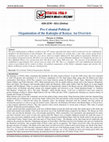
International journal of innovative research and development, 2016
The most striking features of History of Africa in the 19 th century especially East Africa which... more The most striking features of History of Africa in the 19 th century especially East Africa which is believed to be the cradleland of mankind is the phenomenon of state formation. The century was therefore an exciting time, a time when various groups faced challenges of growth and in some few cases decay which was mainly influenced by their political organization. Kalenjin are descendants of migrants from the Nile River area of the Sudan or the western Ethiopian highlands. It is thought the ancestors of these Highland Nilotes were moving from their Nile River areas about 3000 years ago. The ancestors of the Kalenjin were established in approximately their current areas by about A.D. 500. This is a community with well-established decentralized system of government led by council of elders, the political organization of this Nilotic community unique and enriches the History of Kenyan societies in the pre-colonial period.
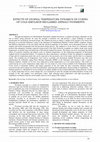
Strength development in Cold-Emulsion Reclaimed Asphalt Pavements is gradual and largely dependen... more Strength development in Cold-Emulsion Reclaimed Asphalt Pavements is gradual and largely dependent on the rate at which curing proceeds. Its early life strength is therefore low and presents a major challenge in material specification for mechanistic pavement design. The solution has been to subject a sample of the mixture to be used in the pavement to accelerated laboratory curing to the attainment of Equilibrium Moisture Content (EMC) condition. Fatigue and Stiffness parameters of the mix along with the chemical properties of the binder can be determined from the cured samples and results incorporated into the pavement design process. The emphasis is in the choice of a laboratory curing protocol that adequately simulates expected curing trends in the field. Protocols in popular use employ steady state curing temperatures to predict long term behaviour of Reclaimed Asphalt Pavements. This project set out to investigate the likely effects of seasonal variations and diurnal cycles in...
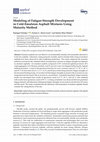
Emulsion asphalts are cost-effective, environmentally friendly, and sustainable alternatives to h... more Emulsion asphalts are cost-effective, environmentally friendly, and sustainable alternatives to hot-mix asphalts. Laboratory curing protocols currently used to simulate field curing of emulsion asphalts have been observed to offer conflicting predictions. This study employed the maturity method to account for the combined effects of temperature and time on fatigue-strength development in emulsion asphalts. An emulsion asphalt, composed of 55% reclaimed asphalt pavement, 45% virgin aggregates, 6.2% bitumen emulsion, and 4% pre-mix water was designed following the Asphalt Institute procedure. A total of 168 specimens from the mix were variously cured at 5 • C, 25 • C, 40 • C, and 50 • C for time intervals of 1, 3, 5, 7, 14, 21, and 28 days, before being tested for fatigue-strengths on the four-point bending test jig. It was observed that fatigue-strengths increased with an increase in cure temperature but decreased with an increase in cure duration. A parabolic hyperbolic fatigue-maturity model was developed from results of specimens cured at 5 • C, 25 • C, and 40 • C and validated with results from specimens cured at 50 • C. A strong correlation was observed between predicted fatigue-maturity and laboratory-determined fatigue-strengths at test strain levels between 125 µm/m and 200 µm/m. The study concluded that the laboratory characterization of emulsion asphalts should consider the curing history of the mix.

Bitumen emulsion asphalts, especially those incorporating marginal and secondary aggregates, are ... more Bitumen emulsion asphalts, especially those incorporating marginal and secondary aggregates, are energy efficient, environment friendly, and sustainable alternatives to hot-mix asphalts. This study set out to compare engineering properties of a bitumen emulsion asphalt composed entirely of virgin aggregates with another composed of 55% reclaimed asphalt and 45% virgin aggregates. The aggregates were bound with a slow setting cationic bitumen emulsion composed of 65% base bitumen and 35% water. Marshall specimens molded at varying pre-mix water and bitumen emulsion contents were cured in molds for 24 h before being de-molded and cured for a further 72 h at 40 • C. Dry densities, porosities, and indirect tensile strengths for the cured specimens were determined in dry and soaked states. Virgin aggregate mix, at an optimum binder content of 6.1%, had a tensile strength ratio of 1.3 with corresponding air voids and moisture absorption values of 10.1% and 0.92%, respectively. Similarly, reclaimed asphalt mix at an optimum binder content of 6.2% had a tensile strength ratio of 1.03, with corresponding air voids and moisture absorption values of 7.9% and 0.38%, respectively. Compared to virgin mix, reclaimed asphalt mix had lower air voids and lower moisture absorption values with the overall benefit of enhanced resistance to moisture damage.
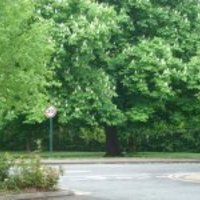
Uploads
Papers by Dr. Kiplagat Chelelgo, Ph.D., MCIArb
amounts of 0%, 10%, 20%, 30%, and 40%. The maximum amount of 40% was chosen to confine the combined fineness of coral and river sand in zone 2 of the gradation curve, which was the zone for the river sand used in the control mix. Bamboo leaf ash was used as a cementitious supplementary material and varied at 0%, 2.5%, 5%, and 7.5% according to the weight of cement. The combined effect of bamboo leaves ash and coral sand on concrete strength development was investigated. To determine the optimal content of coral sand and bamboo leaf ash, 25 mixes were prepared and subjected to compressive strength tests. The mixture containing only river sand and no bamboo leaf ash was the control. Three sets of samples were cured in temperature baths kept at 4°C, 17.5°C, and 40°C. The bath samples were drawn periodically and their compressive strength was tested during a 28-day curing period. It was observed that the early age strength development rate increased with increasing percentage of coral sand. An increase in the amount of bamboo leaf ash was observed to lead to a lower rate of strength development for mixes containing no coral sand. The optimal mix was found to have 40% partial replacement of river sand with coral sand and 5% partial replacement of cement with bamboo leaf ash. The findings were further supported by XRD, SEM, and EDS analyses. The strength-maturity relationship was
developed for the optimal mix. Activation energy, datum temperature, and strength gain constant for the optimal mix were determined as per ASTM C 1074. Calibration curves for predicting concrete strengths were developed using logarithmic, modified
exponential, modified hyperbolic, and dose-response Hill models. Nurse–Saul and Arrhenius maturity indices were used to develop the compressive strength prediction models. The modified exponential model and the dose-response Hill model were
found to have higher accuracy in estimating compressive strengths compared to the logarithmic and modified hyperbolic models which gave poor prediction of compressive strength. Arrhenius maturity function was effective in strength estimation compared to Nurse–Saul maturity function. The results of this study showed promising performance for certain mixtures and hence suggesting potential application in construction projects.
amounts of 0%, 10%, 20%, 30%, and 40%. The maximum amount of 40% was chosen to confine the combined fineness of coral and river sand in zone 2 of the gradation curve, which was the zone for the river sand used in the control mix. Bamboo leaf ash was used as a cementitious supplementary material and varied at 0%, 2.5%, 5%, and 7.5% according to the weight of cement. The combined effect of bamboo leaves ash and coral sand on concrete strength development was investigated. To determine the optimal content of coral sand and bamboo leaf ash, 25 mixes were prepared and subjected to compressive strength tests. The mixture containing only river sand and no bamboo leaf ash was the control. Three sets of samples were cured in temperature baths kept at 4°C, 17.5°C, and 40°C. The bath samples were drawn periodically and their compressive strength was tested during a 28-day curing period. It was observed that the early age strength development rate increased with increasing percentage of coral sand. An increase in the amount of bamboo leaf ash was observed to lead to a lower rate of strength development for mixes containing no coral sand. The optimal mix was found to have 40% partial replacement of river sand with coral sand and 5% partial replacement of cement with bamboo leaf ash. The findings were further supported by XRD, SEM, and EDS analyses. The strength-maturity relationship was
developed for the optimal mix. Activation energy, datum temperature, and strength gain constant for the optimal mix were determined as per ASTM C 1074. Calibration curves for predicting concrete strengths were developed using logarithmic, modified
exponential, modified hyperbolic, and dose-response Hill models. Nurse–Saul and Arrhenius maturity indices were used to develop the compressive strength prediction models. The modified exponential model and the dose-response Hill model were
found to have higher accuracy in estimating compressive strengths compared to the logarithmic and modified hyperbolic models which gave poor prediction of compressive strength. Arrhenius maturity function was effective in strength estimation compared to Nurse–Saul maturity function. The results of this study showed promising performance for certain mixtures and hence suggesting potential application in construction projects.